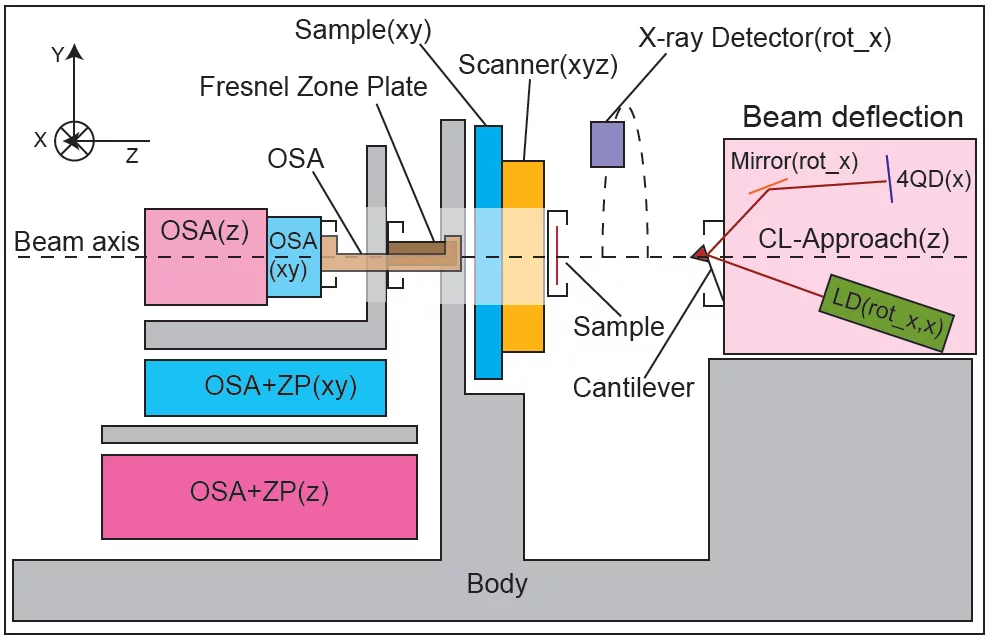APXPS
The APXPS (ambient pressure X-ray photoelectron spectroscopy) is a modular system where the electron analyzer (ScientaOmicron R4000 HiPP-2) can be connected to two experimental chambers. In-situ photoelectron spectroscopy experiments in the millibar range allow the characterization of different interfaces under relevant conditions.
NanoXAS - not available
The NanoXAS endstation consists of a scanning transmission X-ray microscope (STXM) in combination with a scanning probe microscope (SPM). By combining these techniques, the NanoXAS is able to obtain elemental and chemical composition, oxidation states, molecular orientation, topography, surface forces, as well as electric and magnetic properties on a variety of specimens with nanoscale resolution. A Fresnel zone plate focuses the monochromatic x-rays onto a semi-transparent sample. An optical sorting aperture (OSA) filter optimizes transmission of the first diffraction order and blocks out other orders. Several detectors and detection modes can be employed depending on the type of study. The sample is scanned through the x-rays using a fine closed-loop piezo scanner (range 40 um x 40 um x 6 um).


